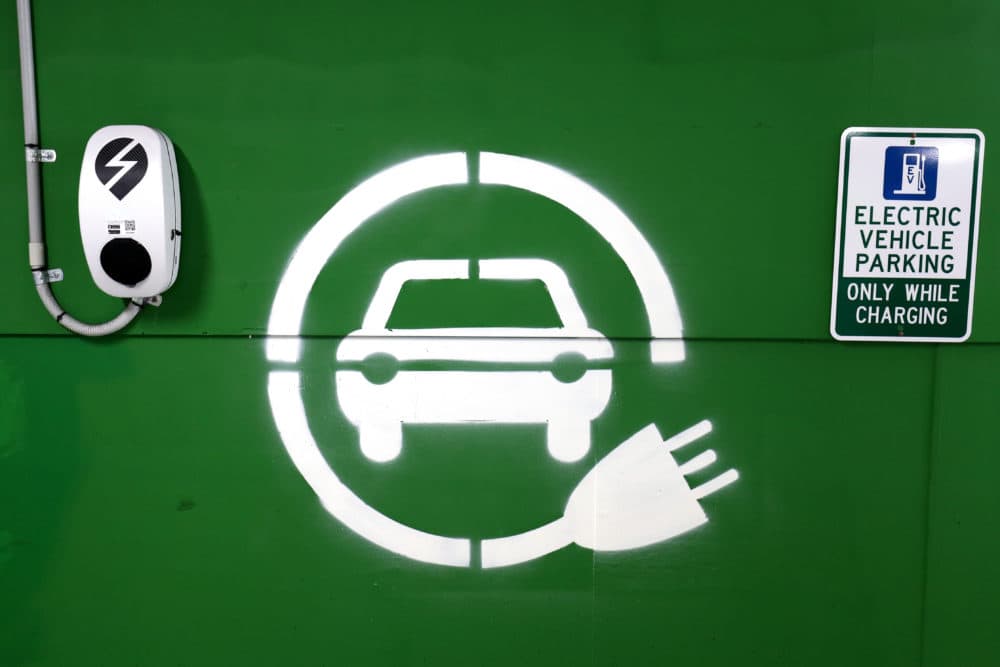Advertisement
Commentary
The dark side of green tech

This past October, a paper in a geological journal described a remarkable discovery in the hills of western Maine — an extensive deposit of the lithium-rich mineral spodumene. Its estimated market value? About $1.5 billion with a “b.”
The demand for lithium is soaring because it’s an essential element in batteries for everything from cell phones to electric vehicles to energy storage systems on the power grid. And although the world surely needs lithium-ion batteries for the transition to carbon-free energy, getting lithium out of the ground and into our new green technology invariably comes with an environmental cost.
Like most metal extraction operations, lithium hard-rock mines and brine recovery sites are known to create sacrifice zones, that is, places where outside mining interests realize financial gains while imposing severe and sometimes permanent environmental degradation. Numerous harms — including air pollution, encroachment on Indigenous lands, destruction and fragmentation of wildlife habitat, and depletion and contamination of water resources — are discounted or simply ignored.
In the Americas, lithium production is centered high in the Andes, near where the borders of Argentina, Bolivia, and Chile meet. On the salt flats of the Atacama Desert in Chile, vast rectilinear pools of pale green and blue brine pumped up from underground evaporate slowly, leaving purified lithium salts to be harvested for export.
The indigenous Likanantay people who live in the area are split. Although the lithium operations provide much-needed jobs, many Likanantay foresee inevitable ecological damages that threaten the local flora and fauna as well as traditional livelihoods. Scientists have evidence that aquifers drained of lithium-rich brine are drawing in groundwater from other freshwater reservoirs that the people rely on for domestic purposes. Similar tensions have arisen in neighboring regions of Argentina and Bolivia.
Though the world surely needs lithium-ion batteries for the transition to carbon-free energy, getting lithium out of the ground and into our new green technology invariably comes with an environmental cost.
The mass commercialization of lithium fits a familiar historical pattern. Conglomerates based in the industrialized nations of the Global North secure access rights in less developed countries. They extract and export raw materials with minimal regard for social and environmental disruption. Payments find their way into the hands of corrupt government officials, and the people from whose land the minerals are mined receive only token economic benefits. Distant refineries and factories add value to the raw materials, and the advanced nations then compete with each other for global control of these strategic commodities.
But now, both Chile and Bolivia have elected new leftist leaders who are questioning the privatization of lithium production and the high profits that foreign powers have been able to negotiate. U.S. companies that depend on lithium minerals, including automakers, would like to guard their supply chains from global political contingencies. They want domestic sources.
Advertisement
The only site currently producing lithium in the U.S. is a brine operation in Silver Peak, Nevada. In the same state, a proposed hard-rock mine at Thacker Pass holds the potential to be a prodigious source of lithium ore. But the plan for that mine has drawn fierce resistance.

Opponents of the Thacker Pass mine say its outsize water consumption — half a million gallons per ton of lithium produced — could spell disaster in an area already feeling the effects of a megadrought. And the project includes a processing plant that will generate airborne toxins and greenhouse gases. Ranchers in the area are worried about the mine’s impact on their herds.
Regardless of where it ultimately originates, lithium production is poised to grow exponentially over the next decade. Research and innovation have yielded advances in the extraction, processing, and applications of lithium resources. All market indicators show demand is surging. The only competing technology for powering zero-emission vehicles is the hydrogen fuel cell, which is lagging in adoption. The lithium boom appears to be unstoppable.
Rather than rethinking our automobile-centric society, we are creating new industries and technologies to maintain ever-rising levels of material consumption even as the economy struggles to decarbonize. As a gauge of the global approach to the climate crisis, the burgeoning lithium industry points to a disquieting continuation of business as usual.
... the burgeoning lithium industry points to a disquieting continuation of business as usual.
But there are bright spots. An innovative brine operation in California’s Salton Sea and the nascent battery recycling industry raise hopes of mitigating the embodied carbon cost of lithium-ion batteries and making the technology sustainable.
So, the owners of the land in Maine where that astonishing spodumene deposit was recently discovered stand to profit nicely. Or maybe not. An environmentally-minded 2017 Maine law prohibits open-pit mines larger than three acres (the deposit extends over 44 acres). The state could treat the extraction site as a quarry rather than a mine, which leaves open the possibility of getting the ore out of the ground.
An article this month in the Maine Monitor quotes the landowner saying, “The more we learn, the more we understand that a choice doesn’t have to be made between sparing the local ecology and extracting the spodumene.”
If she’s right, that mine will mark a departure from the lithium industry’s past.
